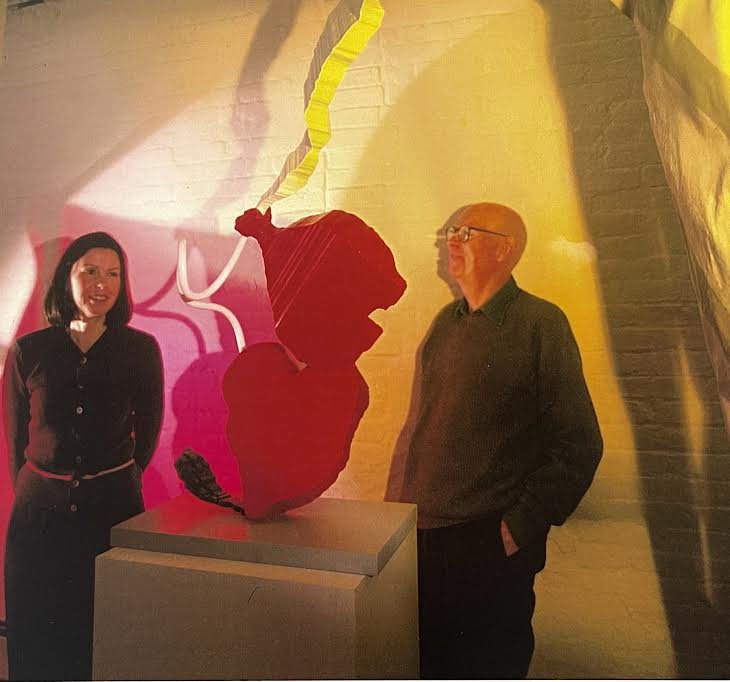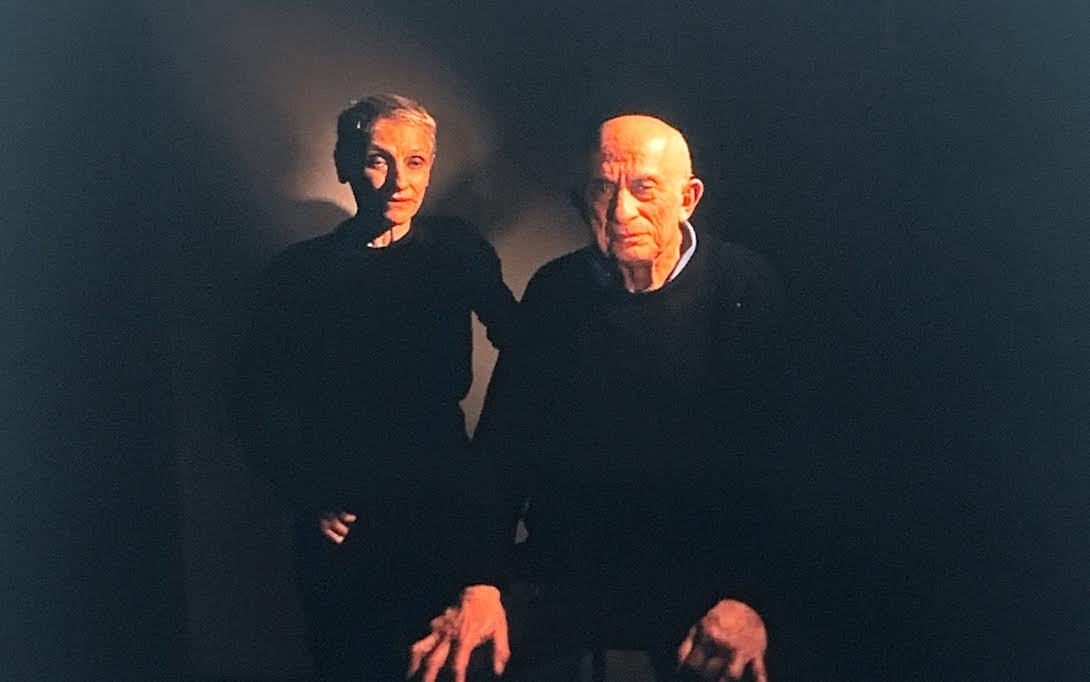#JoanDidion and #JohnGregoryDunne
Joan and John, Claes and Coosje , Robert and Denise, Leon and Nancy; They have all passed.
One twilight afternoon I stood in my living room. I had a martini in hand. My wife and my mother (who was visiting) had a glass of champagne. The city lights to our north twinkled like a cache of jewels stretching to the Pacific.
We began to listen to Puccini’s Tosca. Kiri Te Kanawa’s “Vissi d’arte” exposed our hearts. I extended my hand. I danced with my mother for few moments. Her tears embraced all of my years. “I haven’t danced since before your father passed”. The shaken glow throttled me.
Years later, (thinking of my mother and father) the moment allowed me to recall all of the twosome portraits I had photographed in my career. My archives are filled with many couples shyly jockeying their egos and their hearts in my photographs. For vague reasons most subjects felt this was a seminal moment in their lives. I know it is weird, but true. For me the sessions were like observing a patient with Alzheimer’s: let the subjects say and do; just pay attention.
The night before the a portrait session of two art dealers, I by chance watched the movie “To Have and Have Not”. I told the dealers they were my Bogart and Bacall; They giggled.
What I didn’t realize at the time, was that from the very first day I had made a portrait, I was considering how my subjects, whether one, two or ten related to each other. I have concluded that a successful photograph is about the dance. I might dance like Eugene Delacroix for my fees. I might compel my subjects to dance for my camera. I was on to something.
When Joan Didion and John Gregory Dunne, Claes Oldenburg and Coosje van Bruggen, Robert Venturi and Denise Scott Brown, Leon Golub and Nancy Spero looked into my eyes I knew that I was sensing Bogart and Bacall in the room with me. It was the beginning of the waltz.
Joan and John wanted to walk with me. They wanted to see how I saw my photographs. They wanted to participate in my experiences. All the while, they would share an amazing exchange of their own lives as if it would be the way they would write our moment: (The photographer) I continued to take pictures and we three spoke about how our moments had similar DNA, but our lives lived generations apart. Their faces looked to each other for comfort and queries. They like owls spun their heads around to try and see what I was seeing. Their gaze returned to my camera. A photograph was made.
#ClaesOldenberg and #CoosjeVanBruggen
#ClaesOldenberg and #CoosleVanBruggen
Claes and Coosje did not use the pronoun “we” once during my first session with them. By the second session ten years later, “we” was a constant. I am not a critic of social behavior or art. But I did notice that their care for who they are and how they presented themselves had changed dramatically. My first portrait was Claes with Coosje. My second portrait was about conjoined female and male. They completed each other’s sentences. I watched them inhale. The room felt like an early dawn with Loons whispering and cooing. I knew I was about to make a portrait. I saw two people as one. Ten years, two artists, two portraits, Claes and Coosje had become one. I snapped my shutter. The image was realized.
#DeniseScottBrown and #Robert Venturi
Robert Venturi and Denise Scott Brown met me on a Saturday afternoon. Controversy shadowed their professional profiles. They were equal in their eyes, There is always a but.
Their studio/office was completely empty. I felt as if I could ask them to jump naked into the Roman Colosseum’s arena of hungry lions they would have complied. They were there for my moment. Whatever it took to appeal to my sense of accomplishment. Every thing we spoke about was left open ended. They seemed to reserve every sentence for the possibility that I would ask them for more: they were ready to share. If I had heard secrets, they knew that they were between our three. No brighter sunny Philadelphia day was ever shared with such engaging souls.
#NancySpero and #LeonGolub
Leon Golub and Nancy Spero might have been the most spritely angels I have photographed. They were artists in love; with an edge. They had a political bent. Their art was steeped in contemporary political history. They raised the cultural roofs for political change 24/7. They whispered. Their powerwall pulsated under canvases across the planet. If unleashed, the dream was that a cultural democracy would prevail. I danced. Their bodies began to move together but apart. Their hearts and minds performed a pas de deux. The intimacy for my eyes only was staggering.
Sometimes I feel my life stories remind me of the Miles Davis title; “Seven Steps to Heaven”. I feel I am moving in a direction. Maybe it is towards a finale of sorts. My memories are of those who have lived in my life. Those who have passed waltz in my minds’ eyes above the clouds
Joan and John





